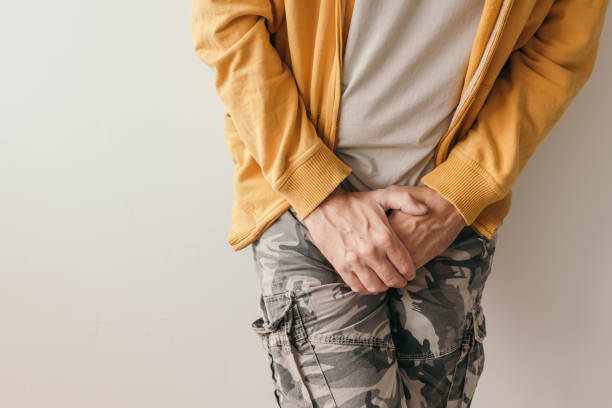Lower abdominal cramps are a common and often uncomfortable experience for many people. They can range from mild to severe in intensity and can be caused by a variety of factors, including digestive problems, menstrual pain, and urinary tract infections. Understanding the symptoms of lower abdominal cramps and the treatment options available can help alleviate discomfort and get you back to feeling your best.
Symptoms of Lower Abdominal Cramps
Lower abdominal cramps can be felt in various parts of the lower abdomen, including the lower right, lower left, and center. They can be accompanied by a number of other symptoms, including:
Pain: The main symptom of lower abdominal cramps is pain. This pain can range from mild to severe and can be accompanied by a dull ache or sharp stabbing sensation.
Bloating: Bloating is a common symptom of lower abdominal cramps. This can be caused by gas or fluid accumulation in the stomach and intestines, and can make the lower abdomen feel swollen or distended.
Diarrhea: Some people experience diarrhea along with lower abdominal cramps. This can be caused by digestive problems or infections.
Constipation: Constipation can also be a symptom of lower abdominal cramps. This can be caused by a variety of factors,including a lack of fiber in the diet, not getting enough physical activity, and certain medications.
Nausea: Nausea is a common symptom of lower abdominal cramps, and it can be accompanied by vomiting in severe cases.
Urinary symptoms: Lower abdominal cramps can also be accompanied by urinary symptoms, such as frequent urination, a burning sensation when urinating, and cloudy or bloody urine.
Menstrual pain: Women who experience menstrual cramps may also experience lower abdominal cramps. These cramps can be caused by the contraction of the uterus as it sheds its lining during menstruation.
Fatigue: Some people experience fatigue or weakness along with lower abdominal cramps. This can be due to the body’s response to pain or to an underlying medical condition.
Causes of Lower Abdominal Cramps
Lower abdominal cramps can be caused by a variety of factors, including:
Digestive problems: Digestive problems, such as irritable bowel syndrome (IBS), inflammatory bowel disease (IBD), and peptic ulcers, can cause lower abdominal cramps.
Urinary tract infections: Urinary tract infections (UTIs) can cause lower abdominal cramps, as well as frequent urination and a burning sensation when urinating.
Endometriosis: Endometriosis is a condition where tissue that normally grows inside the uterus grows outside of it. This can cause lower abdominal cramps, especially during menstruation.
Ovarian cysts: Ovarian cysts are fluid-filled sacs that develop in the ovaries. They can cause lower abdominal cramps, especially if they become twisted or burst.
Appendicitis: Appendicitis is an infection of the appendix that can cause lower abdominal cramps, especially on the lower right side of the abdomen.
Pelvic inflammatory disease (PID): PID is an infection of the reproductive organs that can cause lower abdominal cramps, as well as painful sex and discharge from the vagina.
Treatment for Lower Abdominal Cramps
The treatment for lower abdominal cramps depends on the underlying cause. Here are some common treatment options:
Over-the-counter pain relievers: Over-the-counter pain relievers, such as ibuprofen and acetaminophen, can help alleviate the pain associated with lower abdominal cramps.
Antibiotics: If lower abdominal cramps are caused by a bacterial infection, such as a UTI or PID, antibiotics may be prescribed to treat the infection.
Hormonal therapy: Hormonal therapy may be used to treat lower abdominal cramps caused by endometriosis. This can include birth control pills, which can help regulate the menstrual cycle and reduce pain.
Dietary changes: Making dietary changes, such as increasing fiber intake, can help relieve the symptoms of lower abdominal cramps caused by digestive problems.
Surgery: In some cases, surgery may be necessary to treat lower abdominal cramps. For example, surgery may be needed to remove an ovarian cyst or to treat appendicitis.
Heat therapy: Applying heat to the lower abdomen, such as with a heating pad, can help alleviate the pain associated with lower abdominal cramps.
Exercise: Regular exercise can help improve digestive function and reduce the symptoms of lower abdominal cramps caused by digestive problems.
Conclusion
Lower abdominal cramps can be a sign of a number of different medical conditions. Understanding the symptoms and potential causes of lower abdominal cramps can help you seek the appropriate treatment to alleviate discomfort and get back to feeling your best. If you experience persistent or severe lower abdominal cramps, it’s important to see a doctor for a proper diagnosis and treatment plan.

 Home
Home Health
Health Diet & Nutrition
Diet & Nutrition Living Well
Living Well More
More












